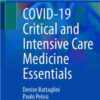Using Dynamic Variables to Guide Perioperative Fluid Management
anesthesiology.pubs.asahq.orgIntravenous fluid administration is an integral part of patient management during anesthesia. This practice has a strong clinical rationale since a decrease in blood volume, either present before or developing during surgery, is a major cause of morbidity and mortality. In order to preempt the risk of such hypovolemia large amounts of intravenous fluids are frequently administered, especially during major surgery.
However, accumulating evidence in recent years has suggested that a too “liberal” approach to perioperative fluid management may lead to increased complications and worse patient outcome.
On the other hand, a “restrictive” strategy designed to achieve zero fluid balance following major abdominal surgery may result in a higher rate of acute kidney injury.
Both the “liberal” and the “restrictive” approaches to intraoperative fluid management seem to be equally associated with acute kidney injury, increased morbidity, 30-day mortality, cost, and postoperative length of stay.
These recent studies led to the recommendation, repeated in a clinically focused review on perioperative fluid therapy published recently in Anesthesiology, that perioperative fluid regimen should be kept “moderately liberal.”

















